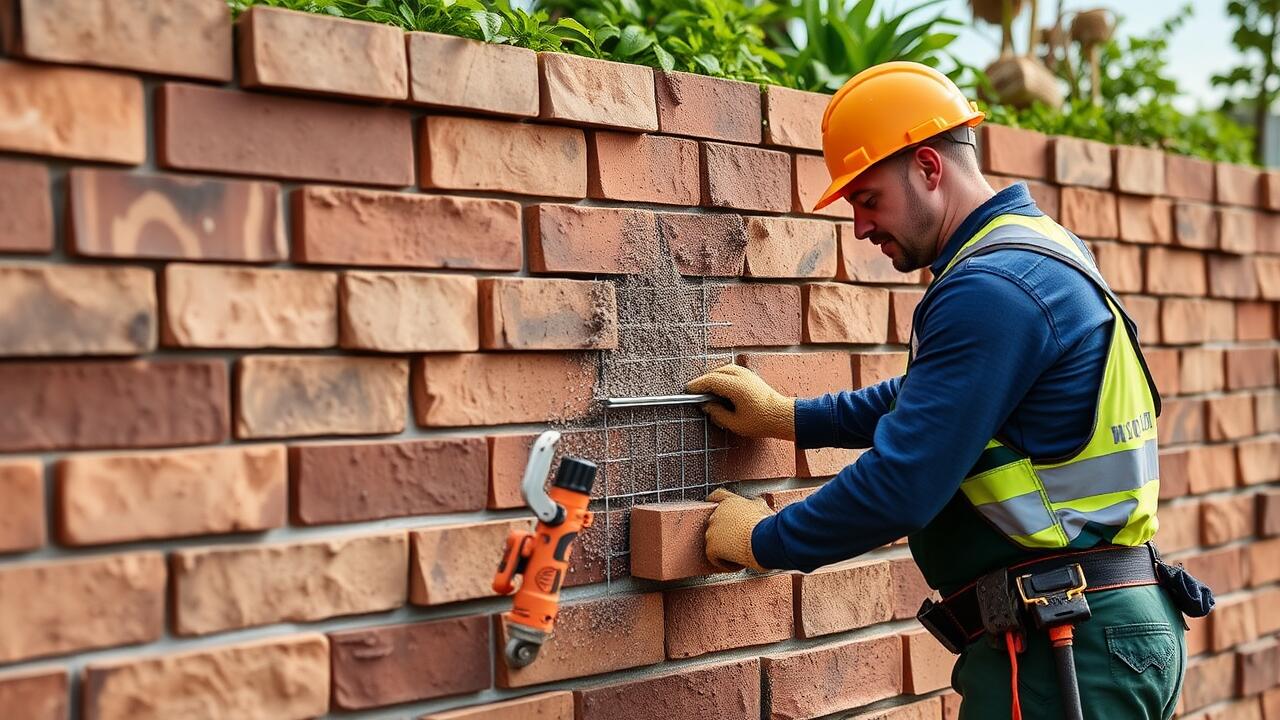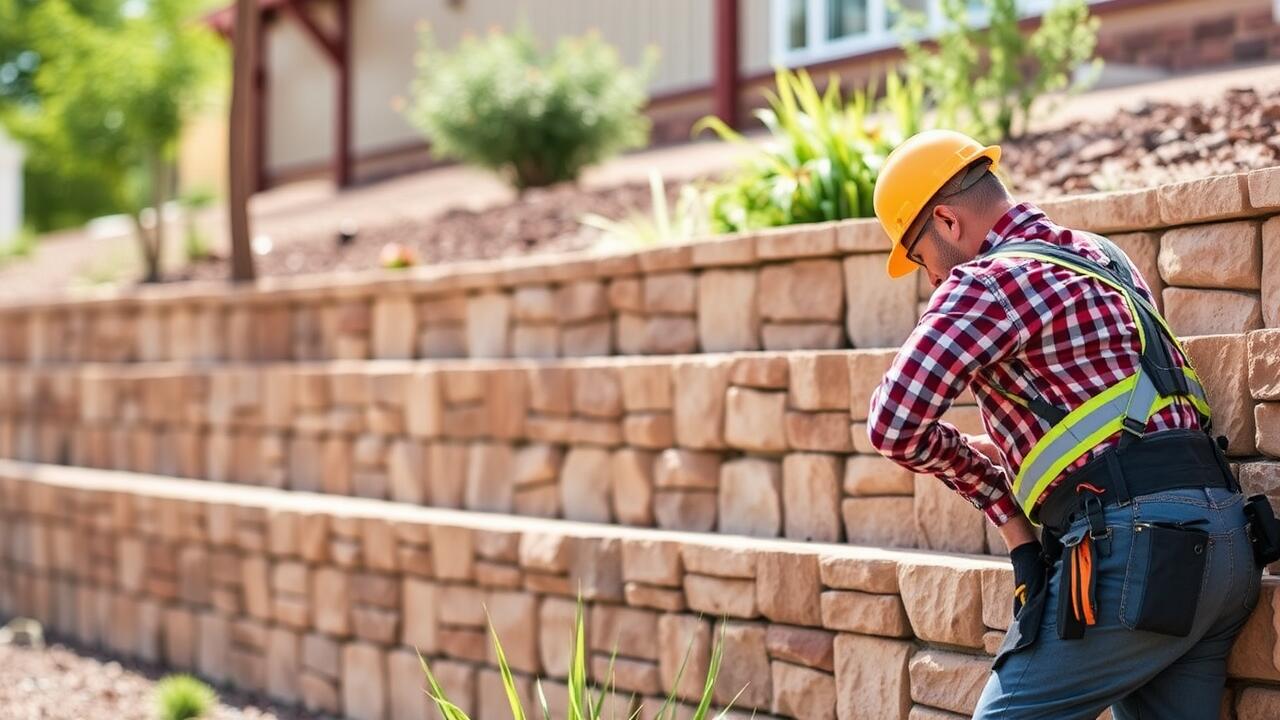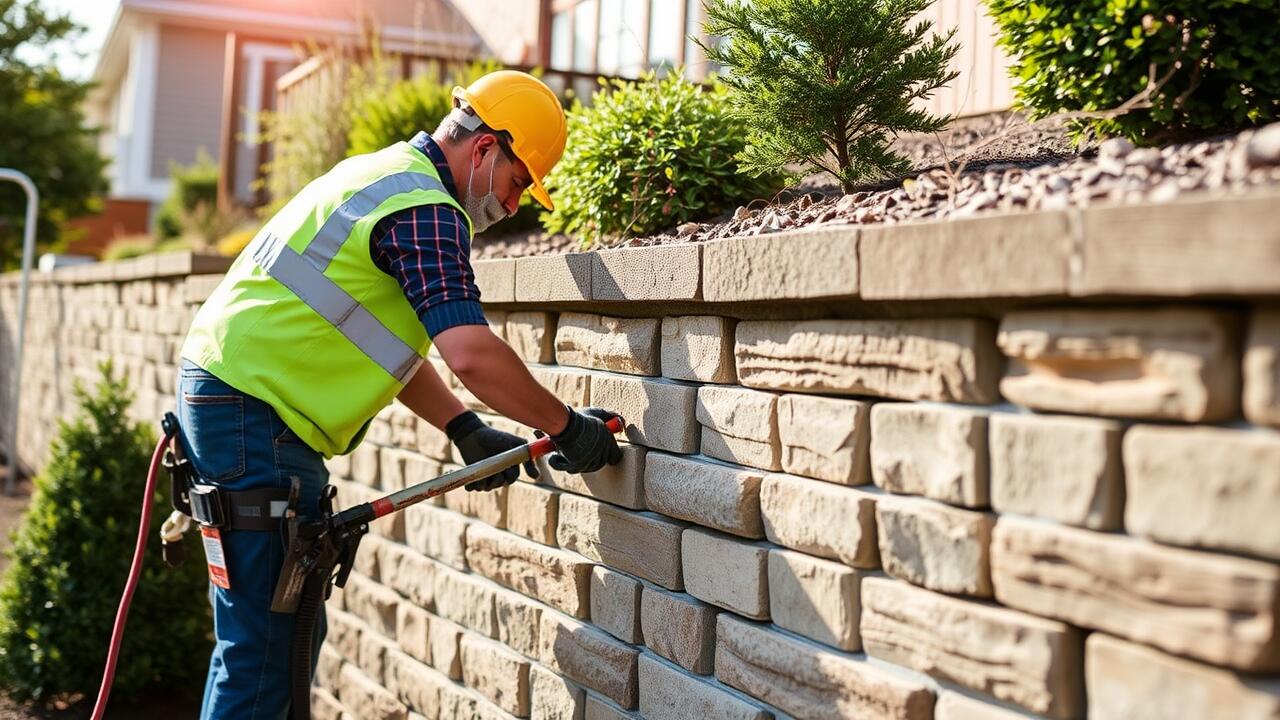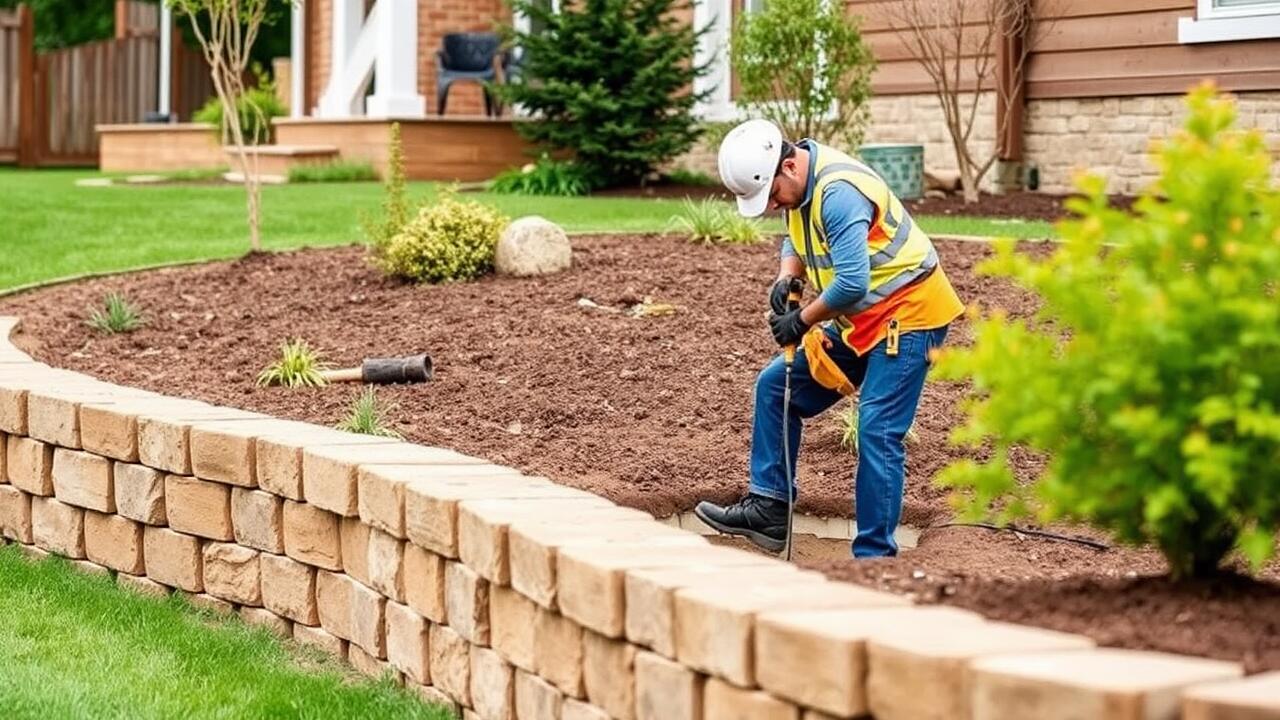
Maintenance and Long-Term Costs
Maintaining a pile retaining wall is essential for ensuring its long-term effectiveness and durability. Proper care involves regular inspections to identify any signs of wear, shifting, or water damage. Over time, factors such as soil movement and water pressure can impact the wall's integrity, potentially leading to costly repairs if not addressed promptly. Owners should also keep vegetation and debris away from the wall to prevent moisture buildup, which can weaken the structure.
When budgeting for future repairs related to Retaining Wall Installation, it is wise to include a contingency fund. This fund can cover unexpected issues that arise due to environmental factors or material degradation. Additionally, investing in quality construction materials and a professional installation can minimize long-term costs by reducing the need for frequent repairs. By planning ahead and understanding the maintenance requirements, property owners can better manage the financial implications of their retaining walls over time.
Budgeting for Future Repairs
When planning for retaining wall installation, it’s essential to factor in potential future repairs. Over time, various elements such as weather conditions, soil movement, and water drainage can impact the integrity of the wall. Setting aside a budget for maintenance ensures that homeowners are prepared for any necessary repairs, which can help avoid larger expenses down the line. Regular inspections and maintaining proper drainage are crucial components of this proactive approach.
In addition to routine maintenance, unforeseen issues can arise, leading to unexpected costs. For instance, if the retaining wall shows signs of bowing or settling, this may indicate more significant problems with the foundation or surrounding environment. These complications could necessitate extensive repairs or reinforcements. By having a repair budget in place, homeowners can comfortably address any concerns that threaten the long-term durability of their retaining wall installation.
Cost Estimates for Small vs. Large Projects
When estimating costs for pile retaining wall installation, project size plays a crucial role. Smaller projects typically demand fewer materials and less labor, often resulting in lower total expenses. For instance, a modest installation might require fewer piles and less excavation work, making it a more budget-friendly option for homeowners or smaller commercial properties. These projects can sometimes be completed in a shorter timeframe, reducing labor costs significantly.
In contrast, larger projects usually present more complexities. Such installations may need greater quantities of materials and a larger workforce to accommodate the size and scope of the work. Furthermore, larger projects often involve more intricate designs and additional site preparation, which can drive costs upward. The need for extensive engineering evaluations and potential necessary permits can also contribute to higher expenditures. Ultimately, understanding these differences is essential for effective budgeting and planning in any retaining wall installation project.
Scale and Its Effect on Pricing
The scale of a project significantly influences the pricing of retaining wall installation. Larger projects often benefit from economies of scale, which can result in lower per-unit costs for materials and labor. Conversely, small projects may incur higher costs relative to their size because fixed expenses such as mobilization and equipment rental remain constant regardless of project size.
In addition, the complexity of the site and the desired design can also affect the overall cost. Smaller sites might necessitate more intricate planning and additional engineering work, driving up expenses. For larger retaining wall installations, while the material costs may decrease per unit, the logistics involved in handling and transporting heavy materials can add to the overall budget.
Additional Features to Consider
When considering retaining wall installation, various features can affect overall costs. Options such as decorative finishes, drainage systems, and waterproofing can enhance functionality and aesthetics. These additional elements may not be included in standard estimates. Investing in high-quality materials may increase initial expenses but can lead to longer-lasting results.
Landscaping integration is another aspect to factor in, as it can significantly impact the final cost of the project. If you plan to include plants, lighting, or other landscape elements, this can add both aesthetic value and additional expenses. Understanding the full scope of your project will ensure that the retaining wall installation meets both your structural needs and design preferences.
Enhancements That May Increase Overall Cost
When considering enhancements for a pile retaining wall, various factors can contribute to an increase in overall costs. Adding features like decorative finishes or weather-resistant materials can elevate both functionality and aesthetics. These upgrades often require specialized labor and more expensive resources, leading to a higher total project budget. Additional drainage systems or landscaping features can also enhance the wall's performance, but they may significantly influence the final pricing.
While the core purpose of retaining wall installation focuses on structural support, additional functionalities can further complicate pricing. Incorporating features such as integrated lighting or custom access points adds both complexity and visual appeal. The choice of enhanced designs may necessitate a more rigorous planning process, resulting in extended timelines and increased labor charges. Homeowners should adequately weigh these options to understand how they might affect the overall expenditure.
FAQS
What factors influence the cost of a pile retaining wall?
Several factors influence the cost, including the type of materials used, the wall's height and length, site conditions, labor costs, and any additional features or enhancements you choose to include.
How do maintenance and long-term costs affect the overall budget for a pile retaining wall?
Maintenance and long-term costs can significantly impact your budget. Regular maintenance, such as inspections and repairs, is essential to ensure the wall's longevity and structural integrity, which can add to overall expenses over time.
Are there significant cost differences between small and large pile retaining wall projects?
Yes, there are typically significant cost differences. Larger projects may benefit from economies of scale, but they also may require more extensive site preparation and materials, which can increase overall costs.
What additional features should I consider when budgeting for a pile retaining wall?
Additional features to consider include drainage systems, decorative elements, or enhanced stability options. These enhancements can increase costs but may provide added benefits in terms of functionality and aesthetics.
How can I estimate the cost of a pile retaining wall for my specific project?
To estimate the cost for your specific project, it’s best to consult with a contractor who can assess the site conditions and requirements. They can provide a detailed estimate based on local material costs, labor rates, and project specifications.




